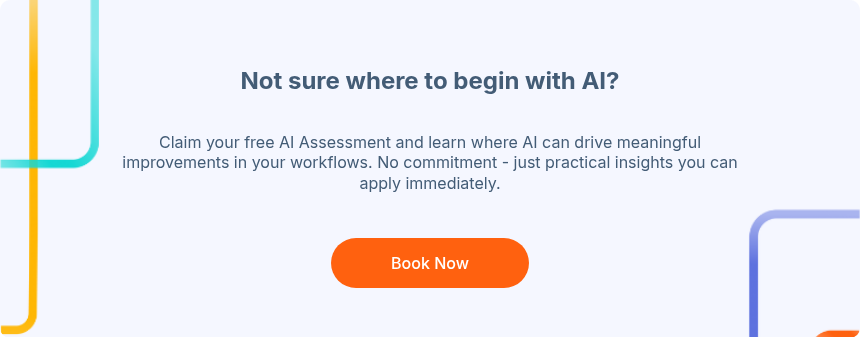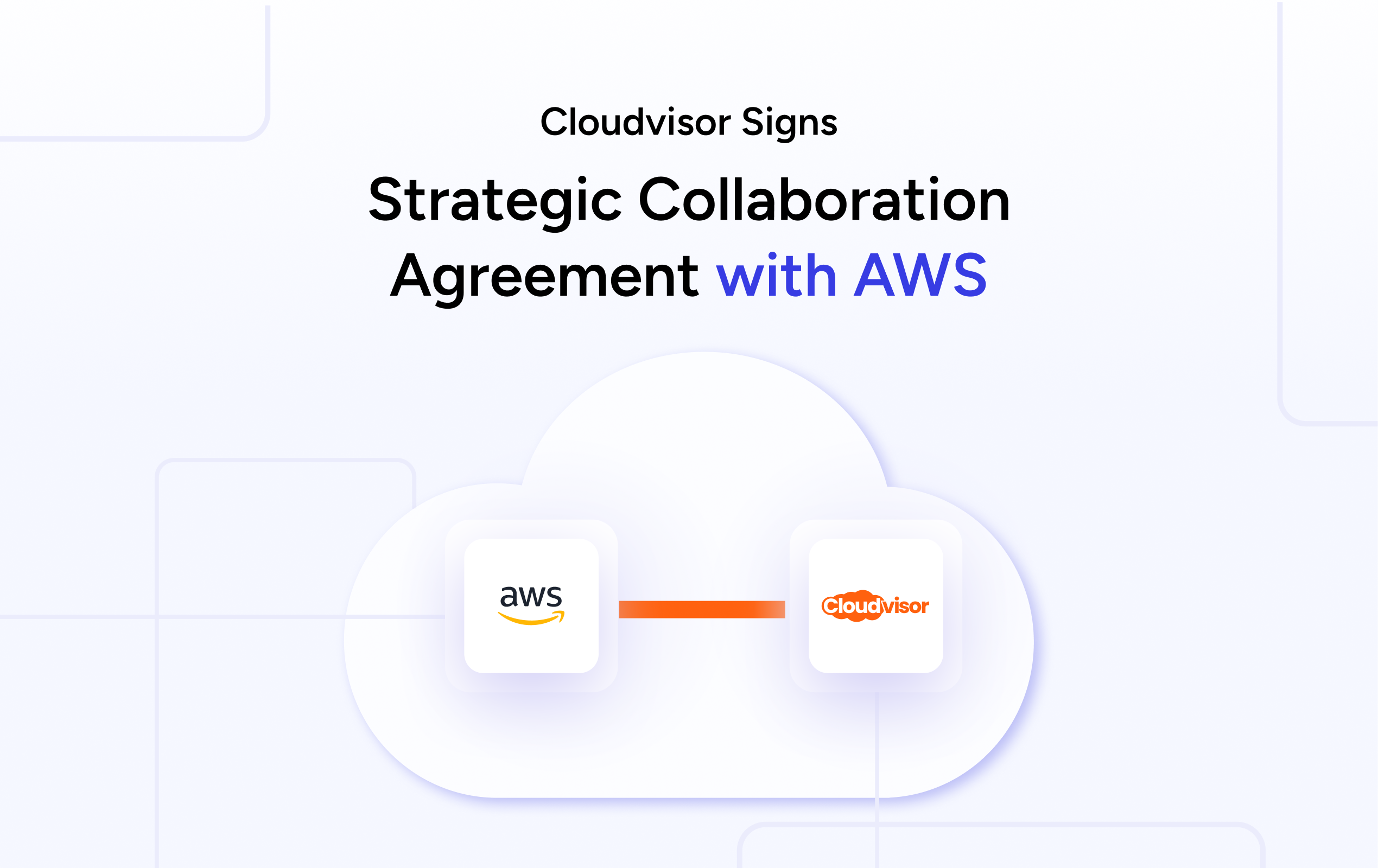Table of Contents
In late 2023, Amazon introduced Amazon Q, a generative AI assistant family designed to boost productivity for developers and business users. Amazon’s AI chief Swami Sivasubramanian said early customers reported productivity gains of over 80%. Since then, Q’s capabilities have expanded rapidly. Today, two main products make up the Q family:
- Amazon Q Developer, a coding assistant integrated into IDEs, the AWS Console and the command line. It provides code suggestions, autonomous agents to execute tasks, security scans, and integration with AWS services.
- Amazon Q Business, a generative AI assistant for the workplace that synthesizes information across 40+ enterprise systems to answer questions, generate reports, and complete tasks based on internal data.
What Is Amazon Q?
Amazon Q Developer
Amazon Q Developer is the successor to AWS CodeWhisperer. It’s a generative AI coding assistant that helps developers build, manage and optimize applications. A Superblocks article notes that Q Developer expands on CodeWhisperer by adding autonomous agents, conversational AI and error diagnostics. It keeps all of CodeWhisperer’s core features autocomplete code suggestions, reference tracking for open‑source snippets and security scanning but adds a host of new capabilities:
- Autonomous agents: Q Developer can carry out multistep tasks like upgrading dependencies or refactoring code. It analyzes your repository, creates a new branch, proposes changes and documents its reasoning.
- AWS cloud integration: In the AWS Console or command line, you can ask Q to list your Lambda functions or generate CLI commands. It won’t execute commands without your confirmation but saves time generating boilerplate.
- Enterprise compliance: Q Developer is eligible for use in regulated environments (SOC, ISO, HIPAA, PCI), depending on your organization’s AWS configurations.
- IDE and CLI support: Q integrates with Visual Studio Code, JetBrains IDEs, Visual Studio and Eclipse.
- Code transformations: Q can automatically upgrade frameworks (e.g., migrating from Java 8 to Java 17) or convert code between languages with minimal input.
- Project‑wide context: Unlike simple autocomplete tools, Q understands relationships across files.
- Test generation and conversational AI: Q can generate unit tests and explain code in plain language.
These features make Q Developer a powerful assistant for tasks ranging from simple code suggestions to autonomous codebase refactoring. According to Campus Technology, Amazon used Q’s agents to upgrade 1,000 applications from Java 8 to Java 17, completing work that would have taken months in just two days.

Amazon Q Business
Amazon Q Business is designed for the broader enterprise workforce. It connects to more than 40 data sources including Microsoft Exchange, Salesforce, Slack, Gmail, ServiceNow and Amazon S3 to answer questions, generate content and provide summaries. It enforces your organization’s security policies so employees only see data they’re authorized to access. Key capabilities include:
- Permission‑aware Q&A: Employees can ask natural‑language questions about company policies, sales performance, marketing content and more. Q provides citations and respects user permissions.
- Report and dashboard generation: In Amazon QuickSight, users can ask Q to build dashboards or generate business review stories. Q combines data from multiple sources to provide unified insights.
- Content creation and internal research: Marketing managers can ask Q to draft social media posts or blog outlines; HR can have Q generate job descriptions. Q can quickly find and synthesize information across knowledge bases and document repositories, significantly speeding up research.
- App building with Q Apps: The Pro tier includes a preview of Q Apps, letting users create shareable, natural‑language applications based on organizational data.
- Integration with AWS services: Q appears in Amazon Connect (for contact‑center agents), QuickSight (for BI), AWS Supply Chain, and more. Campus Technology notes that Q’s data is not used to train the underlying model, preserving privacy.
Amazon Q Pricing Explained
Q’s pricing is designed to be straightforward but varies by product and tier. Each plan charges on a per‑user basis and includes usage allowances for agentic requests, code transformations or Q Apps. Understanding these details is essential for budgeting and avoiding overage fees.
Amazon Q Developer Pricing
Q Developer offers two tiers:
| Tier | Monthly cost | Included usage | Key benefits | Best for |
|---|---|---|---|---|
| Free | $0 | 50 agentic requests/month and up to 1,000 code‑transformation lines per month | Code suggestions, basic agent use, IDE and CLI access | Individual developers or teams trialing Q without heavy workloads |
| Pro | $19/user/month | 1,000 agentic requests/month and 4,000 code‑transformation lines per user per month; additional lines cost $0.003 each | IP indemnity, SSO via AWS IAM Identity Center, custom model context, centralized policy management, analytics dashboards, automatic data‑retention opt‑out | Professional developers and teams needing advanced security and higher throughput |
Both tiers include core features like chat‑based assistance, code suggestions and security scanning. The biggest differences are usage limits and enterprise features. If you frequently hit the free tier’s 50‑request limit or need centralized management, the Pro plan pays for itself by increasing productivity.
Amazon Q Business Pricing
Q Business also offers two user‑based subscription tiers:
| Plan | Monthly cost | Key features | Ideal for |
|---|---|---|---|
| Lite | $3 per user/month | Permission‑aware Q&A, natural‑language access to internal data, dashboards and summaries in QuickSight; supports basic integration with enterprise systems. Does not include Q Apps. | Organizations that want to give all employees access to AI assistance at a low cost (HR, IT and help desk chatbots) |
| Pro | $20 per user/month | All Lite features plus access to the Q Apps preview for building custom applications, integrations with Amazon Connect and QuickSight Pro, access to custom plugins, support for submitting time‑off requests or meeting invites, and extended context windows. | Enterprises needing full generative‑AI capabilities, including custom app creation and advanced integrations |
Note that Q Business charges additional fees for index units, which determine how much data you can connect. AWS offers two index types Starter and Enterprise with different availability and storage limits. The Starter index runs in one Availability Zone and supports up to 20,000 documents or 200 MB of extracted text; the Enterprise index runs in three Availability Zones and adds customer‑managed key encryption. You can choose different index types for different workloads and pay per index unit (pricing varies by region). Q Business subscription charges are managed individually per application or account, and IAM Identity Center ensures users are only billed once for their highest subscription level.
Hidden Costs and Budgeting Tips
While per‑user pricing seems straightforward, several hidden costs can surprise new adopters:
- Agentic request and transformation overages: Exceeding the included number of agentic requests or code transformation lines results in per‑unit fees (e.g., $0.003 per extra line). Monitor usage to avoid unexpected charges.
- Index unit fees in Q Business: Each index (Starter or Enterprise) adds a monthly fee. Overloading the index with large volumes of text can require additional units.
- Data transfer and storage costs: Moving large datasets into Q Business or storing context can incur S3 and networking charges. Evaluate where your data resides and plan accordingly.
- Support plans and premium features: Access to AWS Enterprise support or advanced Q features may require higher support tiers.
To manage costs, set budgets and alarms in AWS Budgets and track usage with AWS Cost Explorer. Tag Q resources (indexes, data sources, user subscriptions) by project or department to allocate costs accurately. Monitor agentic requests and transformation lines through built‑in dashboards.
Key Features & Capabilities of Amazon Q
Amazon Q stands out because it combines large language models with deep integration into AWS services and enterprise data sources. Below we outline the most compelling features across Q Developer and Q Business.
Autonomous Agents and Code Transformation
Q Developer includes agents capable of performing complex tasks. For example, when upgrading from Java 8 to Java 17, Q can analyze your repository, create a new branch, transform code across multiple files, and generate test cases. Amazon reports that these agents upgraded 1,000 applications in two days a job that typically takes months. Agents can also refactor code, migrate frameworks, or implement new features described in natural language.
Natural‑Language Cloud Operations
In the AWS Console or CLI, Q lets users ask questions about their infrastructure such as “List my Lambda functions” or “What’s the cost of S3 bucket ‘analytics-data’?” and automatically generates CLI commands or CloudWatch queries. This saves time for cloud administrators and helps new team members interact with AWS resources without deep CLI knowledge.
Security and Compliance
Q Developer offers built‑in security scanning that analyzes code for vulnerabilities and suggests fixes. Both Developer and Business variants support enterprise compliance (SOC, ISO, HIPAA and PCI) if configured correctly. The Pro tiers include IP indemnity for generated code and automatic opt‑out from training or data retention.
Multimodal Data Integration
Q Business connects to more than 40 enterprise systems, including Microsoft Exchange, Salesforce, Slack, Gmail, ServiceNow and Amazon S3. This allows the assistant to synthesize information from different platforms and provide context‑aware answers. For example, an employee can ask, “What were this quarter’s top sales opportunities?” and Q will draw data from CRM, marketing and finance systems while respecting access permissions.
QuickSight and BI Capabilities
Q integrates with Amazon QuickSight for business intelligence. Users can create dashboards by asking natural‑language queries, such as “Build a story about how revenue changed last month for our leadership review.” Q automatically generates visuals and narratives. This democratizes analytics by enabling non‑technical employees to explore data without SQL or drag‑and‑drop tools.
Q Apps and Custom Plugins
The Pro tier of Q Business includes a preview of Q Apps natural‑language applications that allow users to automate tasks and build workflows without coding. For example, employees can create a “Submit time‑off request” app that interacts with HR systems or a meeting scheduler that integrates with Slack and Outlook. Pro users can also access custom plugins to perform actions like sending meeting invites or requesting approvals from third‑party applications.
Agents for Customer Service and Supply Chain
In Amazon Connect, Q acts as a real‑time assistant for customer service agents. It provides recommendations during calls, suggests responses in chat, and guides agents through troubleshooting. Q also supports Amazon Supply Chain, helping employees analyze data, forecast demand and optimize supply chains. These integrations extend generative AI into operational workflows.

Step‑by‑Step Guide to Adopting Amazon Q
Whether you plan to use Q Developer to supercharge your software team or Q Business to empower employees with data‑driven answers, following a structured adoption process ensures success.
Step 1: Assess Your Needs and Select a Plan
Begin by identifying who will use Q and what tasks they will perform. For developers focused on coding, start with Q Developer Free and upgrade to Pro once you hit usage limits or need advanced security and SSO. For enterprise chatbots and data analysis, evaluate Q Business Lite vs. Pro. The Lite plan offers basic Q&A and QuickSight integration at $3 per user/month, while the Pro plan adds Q Apps and advanced integrations at $20 per user/month. Calculate expected agentic requests and code transformations to choose the right tier.
Step 2: Set Up IAM and User Management
Create or update an IAM Identity Center (formerly AWS Single Sign‑On) instance to manage users. Assign each user to the appropriate Q subscription (Developer or Business, Free or Pro). The Pro plans include SSO integration via IAM Identity Center. Ensure policies allow q:InvokeAgent and other Q API actions. If you’re using Q Business, attach data source permissions so users can access only what they’re authorized to see.
Step 3: Connect Data Sources (Q Business)
For Q Business, select an index type (Starter or Enterprise) based on your storage and availability needs. Connect data sources such as Salesforce, Slack, Microsoft Exchange or S3 using AWS console connectors. Each connected data source consumes part of the index capacity; monitor usage to avoid hitting limits. Once data is indexed, Q can answer questions and generate reports across these systems.
Step 4: Install Q Developer in Your IDE or CLI
If you’re adopting Q Developer, install the Q extension or plugin in your IDE (e.g., Visual Studio Code). You can also access Q via the AWS Console or CLI. Use the chat interface to ask for code suggestions or debugging help. Start by submitting simple tasks, like “Add a logging function to this Lambda,” to see how the assistant responds.
Step 5: Experiment with Agents and Q Apps
Test Q Developer’s agents by asking for a code upgrade or automated refactor. For Q Business Pro, explore Q Apps: ask Q to create an HR onboarding app or a meeting scheduler. Evaluate how well Q handles multistep tasks and note any overages or performance issues.
Step 6: Monitor Usage and Optimize Costs
Use AWS tools (CloudWatch, Budgets, Cost Explorer) to track agentic requests, code transformation lines and index usage. If you’re nearing quotas, consider upgrading to Pro (Developer) or purchasing additional index units (Business). For Q Business, categorize queries by team to understand ROI and adjust subscriptions accordingly.
Cost Optimization & Best Practices
Generative AI can deliver huge productivity gains, but uncontrolled usage can quickly inflate bills. Follow these tips to maximize value while keeping costs manageable.
- Start with a pilot. Launch Q with a small group of developers or a specific department (like HR or finance) to measure productivity gains and costs before rolling it out company‑wide. Monitor usage patterns and gather feedback.
- Set usage alerts. Use CloudWatch and Budgets to notify you when agentic requests or code transformation lines approach their monthly limits. Adjust tasks or upgrade plans accordingly.
- Leverage free tiers. Take advantage of Q Developer’s free 50 agentic requests and Q Business Lite’s $3 plan to explore capabilities. Switch to Pro when hitting limits becomes frequent.
- Opt for Starter index where appropriate. For proof‑of‑concept workloads, the Starter index’s lower cost may suffice; upgrade to Enterprise only when you need multi‑AZ availability or customer‑managed encryption.
- Use Q Apps judiciously. Because Q Apps are limited to the Pro tier, evaluate whether building custom apps justifies the higher per‑user cost. Start with templates and reuse them across teams to maximize ROI.
- Combine Q with other AWS services. For example, pair Q with Amazon Bedrock to fine‑tune custom foundation models or use Amazon Kendra as a data source. This can improve answer quality and reduce repeated queries.
- Educate users. Provide training on writing clear prompts, interpreting responses and understanding usage limits. This helps reduce trial‑and‑error queries that consume resources.
Challenges & Considerations
Despite its benefits, adopting Amazon Q may present obstacles:
Cost Predictability
Even with per‑user pricing, usage limits can make monthly costs unpredictable, especially if developers rely heavily on agents or transformation features. Monitor consumption and plan budgets accordingly. Consider building internal policies around Q usage, such as restricting large batch code transformations to specific days.
Model Quality and Hallucination
Although AWS touts Q Business’s superior performance claiming it outperforms competitors on correctness and truthfulness across datasets, no model is perfect. Encourage users to review outputs critically and maintain code reviews and data validation. Evaluate multiple assistants (e.g., Copilot, ChatGPT) to benchmark results.
Data Privacy and Security
Q Business accesses sensitive company data. Ensure you configure IAM permissions carefully and anonymize data where possible. Remember that Q does not use your data to train its foundation models. However, misconfiguration of indexes or connectors could expose sensitive information. Conduct regular audits and follow AWS security best practices.
Adoption and Change Management
Introducing a generative AI assistant may disrupt workflows. Provide training and support; communicate the limitations and proper use of Q to avoid unrealistic expectations. Include Q in existing development and documentation workflows to ensure adoption.
Real‑World Use Cases & Cloudvisor Insights
Here’s how organizations are already using Amazon Q to streamline workflows:
- Software modernization: As noted earlier, Amazon used Q’s agents to upgrade 1,000 applications from Java 8 to Java 17 in two days. This demonstrates how Q Developer can automate large code migrations and save months of manual effort.
- Support and HR chatbots: Companies deploy Q Business Lite as a permission‑aware chatbot for HR, IT and benefits help desks. Employees ask questions like “How many vacation days do I have left?” and receive answers based on internal systems.
- Sales and marketing analytics: By connecting Salesforce, Slack and email, Q Business provides sales teams with quick summaries of pipeline status and marketing leads. QuickSight integration lets managers ask Q to build business review stories, replacing manual spreadsheet work.
- Knowledge management: Organizations use Q Business Pro’s Q Apps to create custom knowledge retrieval tools. For example, a consulting firm built an “Engagement Summary” app: consultants ask Q for a summary of past projects with a client, and Q generates an overview from indexed documents and emails.
At Cloudvisor, we help clients implement Amazon Q effectively. For instance, one fintech customer wanted to reduce developer toil in maintaining legacy microservices. We deployed Q Developer Pro across their engineering team, configured IAM roles and monitored usage. Within weeks, developers were using Q to refactor functions, generate test cases and answer AWS support questions in plain language. The team reported a 30 % reduction in time spent on routine tasks and decreased support tickets. Another enterprise client integrated Q Business with QuickSight and Salesforce to empower sales and operations teams. They used Q Apps to automate status reporting and scheduling, freeing employees to focus on strategic work.
Conclusion
Amazon Q represents a significant step forward in making generative AI accessible for developers and enterprise users. By combining powerful foundation models with AWS‑native integrations and permission‑aware data access, Q can accelerate coding, streamline data analysis and enhance employee productivity. Pricing is transparent: $0 or $19 per developer and $3 or $20 per business user per month but organizations should understand usage limits and index fees before scaling. Adoption requires careful planning, training and cost monitoring, but the potential gains are substantial: autonomous code upgrades, natural‑language BI dashboards and custom low‑code apps built in minutes.
If you’re ready to explore Amazon Q, Cloudvisor can guide you from pilot to production. Our experts will help you choose the right plan, configure IAM securely, connect data sources, train your users, and optimize costs. Book a free AWS consultation today to start transforming the way you build software and empower your teams.





